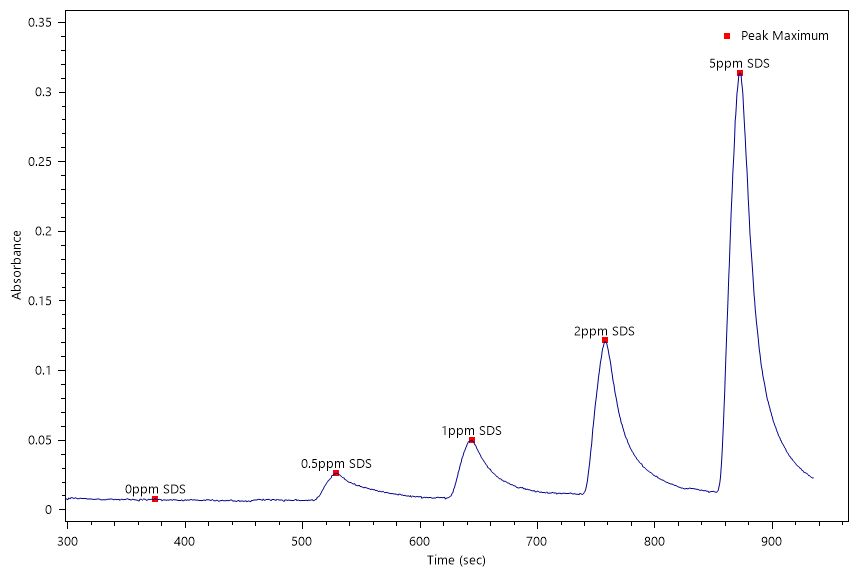Anionic Surfactants
Application Benefits
Automation - reduced manual labor
Environmental consciousness - reduced waste generation
Operator safety - reduced exposure to organic solvent
Introduction
Anionic surfactants are generally measured by the Methylene BlueActive Substances (MBAS) method. It involves liquid-liquid extraction, which makes it labor-intensive when performed manually. In addition, the manual method consumes fairly large amounts of chloroform, which generates a substantial solvent waste stream. An automated, micro-scale method based on flow analysis significantly reduces the operator effort as well as waste generation.
Principle
The sample is mixed with an alkaline solution of Methylene Blue. As Methylene Blue is cationic, it associates with anionic surfactants, forming an ion pair with a net neutral charge. When brought in contact with an organic solvent (chloroform), the neutral ion pair will partition into the organic phase, thus imparting a blue color to the organic phase.
The organic phase is washed with an acidic solution of Methylene Blue to remove blue color due to interfering components. A phase separator module is used to separate the organic phase from the aqueous phase. Finally, a color intensity in the organic phase is measured at 650 nm.
Experimental
Experiments were carried out using the FIAlyzer-FLEX, equipped with a spectrometric detector.
Sampling Times
15 sec (sample) + 95 sec (wash)
Detector Settings
Primary Wavelength: 650 nm
Reference Wavelength: 720 nm
Reagent Composition
Reagent 1 (R1): Alkaline Methylene Blue Solution
Reagent 2 (R2): Acidic Methylene Blue Solution
Organic phase (Org): Chloroform
The instrument and its accompanying methods are applicable to:
Determination of the Methylene Blue active substances (MBAS) index by 16265 (ISO)
Figure 2: Instrument setup and fluidic schematic
Results
Table 1: Method performance parameters
The method can be modified to target lower concentrations. This entails increasing the sampling volume and using an absorbance method can be modified to target lower concentrations. This entails increasing the sampling volume and using an absorbance flow cell with a longer (50 mm) optical path length.
Conclusions
FIAlab’s MBAS method is an automated technique for measuring the level of negatively charged detergents in water samples. It provides laboratories a way to quantify anionic surfactants without excessive manual labor or generation of large amounts of organic solvent waste.
References
[1] Motomizu S. et al. “Spectrophotometric determination of anionic surfactants in water after solvent[1] Motomizu S. et al. “Spectrophotometric determination of anionic surfactants in water after solvent extraction coupled with flow injection”, Analyst 1988, 113, 747-753.





